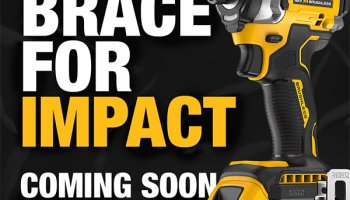
If you buy something through our links, ToolGuyd might earn an affiliate commission.
I have been analyzing, reporting on, testing, reviewing, and of course using cordless power tools for more than 15 years now.
When I started ToolGuyd, the age of NiCad-powered cordless tools was ending, and Li-ion was just beginning.
It’s with all of this experience that I can confidently say the following: we are in the golden age of cordless power tools.
With few exceptions, new tools have few compromises.
Brushless motor technologies are mature.
Performance has been fine-tuned.
The emergence of next-generation battery tech, while significant and important, are not as game-changing as they would have been a few years ago.
Now is a great time to be a pro user or demanding DIYer or hobbyist.
Do you need to cut thick pipe, strut, or engineered beams? Staple wires? Mix drywall compound? Build concrete forms? Drill into thick steel? Strip cables? Crimp pipe fittings? Drain water from a pit? Cut concrete indoors? Core-drill walls? Cut a hole for a kitchen sink?
There are cordless tools for that – and they’re good. Often, users benefit from being able to select from multiple competitive and compelling choices.
The cordless drill torque wars are over, with high performance drills now topping 1,000 in-lbs max torque with little reason to keep going higher.
Newer tools aren’t leaps and bounds better, but have been optimized for productivity and improved user experiences.
New 7-1/4″ cordless circular saws don’t bog down. Reciprocating saws finally have muscle. Grinders have practical runtimes.
Cordless table saws. 12″ miter saws. Vacuums.
This is the golden age in cordless tools.
Do you remember the time before cordless drill and impact driver LED worklights had an “afterglow” feature, where the lights remain on for a set delay following trigger switch release?
There are exciting new tools coming out, but I think we are definitely in an iterative and evolutionary phase right now where advancements will be smaller and more incremental.
How can modern cordless circular saws be made better? Most pro models have ample power and runtime.
Back when the first Li-ion-powered cordless angle grinders were released, they were marketed as cut-off tools. Why? I asked a product manager just that, and they told me it was because those earlier brushed motor tools lacked the power and endurance to be called grinders.
Cordless tool users have it pretty good these days.
Despite now being what I’d consider the golden age of cordless power tools, I think many tool brands will face increasing challenges.
Consider the digital camera industry. Various statistics and research companies report Canon as shipping the most number of units in 2023, followed by Sony, Nikon, Fujifilm, and Panasonic, in that order.
Looking at the numbers in one report, Canon shipped nearly 1.8X the number of units as Sony, Sony shipped more than 2.2X the number of units as Nikon, Nikon shipped more than 2X the number of units as Fuji, and Fuji shipped around 1.38X the number of units compared to Panasonic. These top 5 brands hold more than 94% of the digital camera market share.
But when you take a closer look, the top-selling brand shipped more than 10X the number of units compared to the 5th selling brand, and the second best-selling brand shipped more units than the third, fourth, and fifth best-selling brands combined, and not by a small margin.
Similar is happening in the cordless power tool industry. There’s Dewalt and Milwaukee – in no particular order – and then everyone else.
I’ve been a bit worried about the brands in the “everyone else” category – the ones competing for the far-off third place.
Tool brands need to work harder to gain and retain users, but many are not.

There are 7 cordless power tool brands represented in this graphic.
As a tool user, I would buy into one for their unwavering commitment to end users, another for their continued drive towards a cordless jobsite with competent solutions, another for their focus on DIY interests and needs, and the last one because they do their own thing, which often results in clever products.
Of the three remaining, I bought into one but wish I hadn’t, I wouldn’t touch anything from another, and the last one has continually disappointed me with their apathetic attitude.
It sometimes feels like a lot of cordless power tool brands have given up the fight, as if there’s no point in competing for second-to-last place.
Some of are at the brink of irrelevancy, and eventually obscurity.
Social media changed the ways brands communicate with channels like this one, but I see signs of apathy in all corners of a couple of tool brands’ operations. For some brands, signals showing that they truly care about their products and end users keep getting weaker.
If you’re a marketing or product manager or at a cordless power tool brand and asking yourself “is he talking about us?,” I probably am. Have I been excited about your brand’s products lately? Have you been?
The choices available to tool users are part of what makes this the golden age of cordless power tools.
As much as I like Dewalt and Milwaukee, their competitors need to get back in the saddle.
Multi-party competition is what drove the cordless power tool industry further and what fueled innovation and progress.
Out of 10 tool users buying into their first pro-level cordless power tool system, how many are going with either Dewalt or Milwaukee? What about Bosch? Makita? Are either of the latter brands a threat to Dewalt and Milwaukee dominance anymore?
Is this going to change anytime soon, or go back to how things were 10 years ago? No. But brands need to approach their marketing as if there were still a chance, because then there might be, and that’d be great for tool users.






